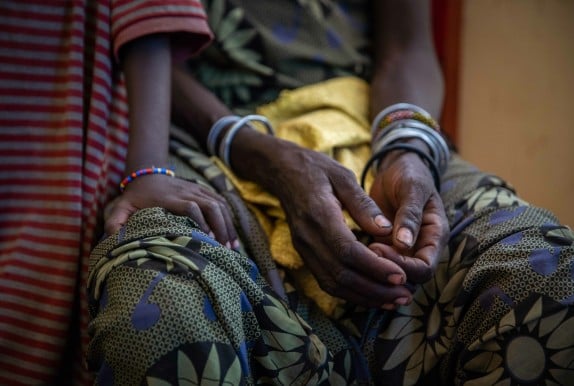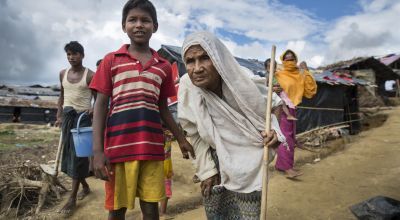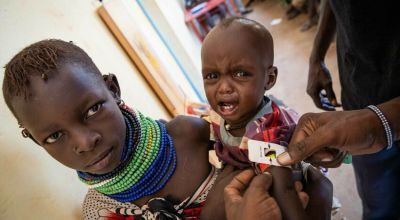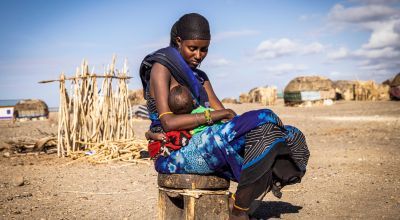
Read our 2023 annual report

Knowledge Hub
Communities in Turkana, northern Kenya, are experiencing the worst drought in 40 years. Some areas have not had rain since November 2019.
The last four rainy seasons have failed and early forecasts suggest that the next rains, due in October, will also fail.
In pastoral areas in Kenya, over 90% of open water sources have dried up, and those remaining are expected to last just one to two months. Already 1.5 million livestock have died in Kenya during the drought.
Malnutrition is rising at an alarming rate, with almost a million children under five years of age in need of urgent treatment. Of these 229,000 are severely acutely malnourished children who face an immediate threat to their life without immediate assistance.
These are some of the experiences of ordinary people in rural Turkana who spoke about how they are coping with the deteriorating situation.
Richard Ekale Nakalale, farmer
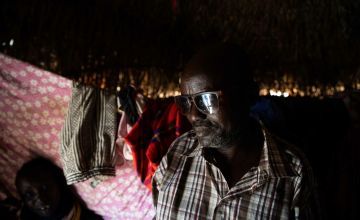
The last 12 months have been the worst pastoralist farmer Richard (52) can remember. The drought has taken a cruel toll in the remote village of Mili Matatu in northern Turkana. Between September and April he lost 86 of his 146 animals. “If it had not rained (locally) for two days we would have lost all our animals . . . even ourselves,” he said.
Richard worried constantly about how he was going to feed his 15 children and two wives. “I felt like I was becoming crazy,” Richard said. He could not sleep at night worrying.
He then contacted local humanitarian organisations like Concern. His wives enrolled in cash transfer programmes, he got his livestock vaccinated and received support to establish a kitchen garden. “Gradually my worries came down.”
Without the support provided by Concern and other humanitarian organisations, he believes most people in Turkana would have died as a result of the drought.
Richard traces the start of the problems in his small village back to torrential rains in November 2019. The flood waters swept away some of his animals and killed the weaker ones. The rains were followed by swarms of locusts which stripped the countryside of pasture for his livestock. “There were so many, you could not see the soil,” he recalled. The four rainy seasons since have failed, leaving local people desperate for water.
To add to his challenges, Richard lost his sight in 2020.
His father left him 1,800 goats and sheep. Over the years that has fallen to 500, then 300 and now just 60. “I imagine in the coming years I will not have one,” he said, adding that he did not see a future for his children as pastoralist farmers. “I think they should stay in town, not here.”
Engoit Likidor, charcoal seller
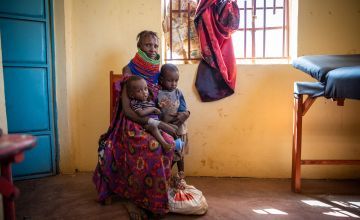
The price of charcoal has collapsed in Sasame, Turkana, as the continuing drought bites deeper. As animals die, local pastoralist farmers have less income and so can’t afford charcoal, which is used as fuel for cooking on stoves.
The price of a charcoal bundle has fallen from 100 Kenyan Shillings to just 50 Kenyan Shillings (€0.80 to €0.40) over the last year. And that’s bad news for mother-of-two Engoit Likidor, who depends on charcoal gathering and selling to feed her family. All her family’s animals have died in the drought.
On days when she doesn’t sell charcoal, she skips meals. Sometimes she goes for days without eating. Despite feeling weak with hunger, she still walks the semi-arid hills of Sasame gathering charcoal and wild fruits to feed her children. These days even the wild fruit are harder to find, due to the drought and the locusts, Engoit notes.
Her children Marka (4) and Eregae (2) are with her at the local clinic for malnourished children, supported by Concern. Both are malnourished. As part of their treatment she receives pouches of highly nutritious nut-based paste for the children and a bag of food for the rest of her family until she returns in a fortnight’s time for a further check.
Ereng Kaleng Kalimapus, farmer
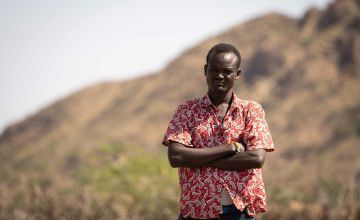
Two issues dominate pastoralist farmer Ereng Kaleng Kilimapus’s every waking moment – how he is going to feed his family and how he is going to keep his livestock alive.
He eats once a day, on a good day. At other times he goes without food for three days at a time in order to ensure there is food for his six children – aged two to six years old – and his three wives.
In the last year he has watched his herd fall from 238 goats to under 200, as a result of drought and disease. Those that have survived are weak and too ill to breed. But he is grateful to Concern who have vaccinated his flock as part of a programme to support local farmers. Before that he had lost a lot of animals as a result of pneumonia.
Ereng moves his livestock around the local area, which is scorched and sparsely populated with thorny bushes. In daytime, when temperatures reach 38 degrees, Ereng digs deep into the stony soil to try and find water for his animals. “They are producing little or no milk,” he notes, adding that he is keeping them to sell for meat.
As a pastoralist, his animals are his only source of income. At the same time as they are dying and his income falls, food prices are soaring. The price of a 50 kilogramme bag of maize flour has risen almost 120% in the last year, going from 1,600 to 3,500 Kenyan Shillings (€13.20 to €26.40).
Ekal Mudang, mother
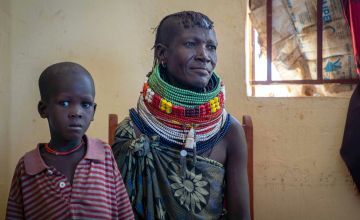
Ekal Mudang had walked for two hours with her son Atul by her side, to reach the remote Sasame malnutrition clinic, near the Kenya/Ethiopia border. He is malnourished, but has been responding to the supply of highly nutritious food supplements provided to him and his six siblings.
Many people in Ekal’s village are sick. They depend on water from hand dug wells which she said is not clean. “It is reason so many are sick,” she believes.
A group of women with young children have been queueing under a tree outside the clinic since early morning. The health facility is currently treating 86 malnourished children and 220 breastfeeding mothers.
People will die. There is no future if the next rains don’t come and we don’t get support.
This is one of the areas where it’s not rained since November 2019. The drought has not just scorched the landscape – it has changed people, Ekal noted. Where once people helped out when a neighbour was in need, “with the lack of money, lack of food, lack of resources, everybody has something small and nothing to give to other people.”
She appreciates the vital support the Concern-backed clinic provides, as well as the wider support provided by external organisations. But it is difficult to depend on others for your survival, she said. “When I was young I did not know about begging and looking for something from somebody else. We had livestock and could sell a goat or a cow if we needed something.”
Her outlook for the immediate future is bleak, amid early forecasts that the October-December rainy season will also fail. “People will die. There is no future if the next rains don’t come and we don’t get support."
Concern's response
Concern is working with communities in Turkana to help those impacted by the drought.
The support includes monthly cash transfers to families, health and nutrition programmes, rehabilitation of bore holes and wells, and livelihood supports (such as tools, seeds and training for kitchen gardens and vaccinations for livestock). As the drought continues, Concern’s team on the ground are escalating their programmes.



